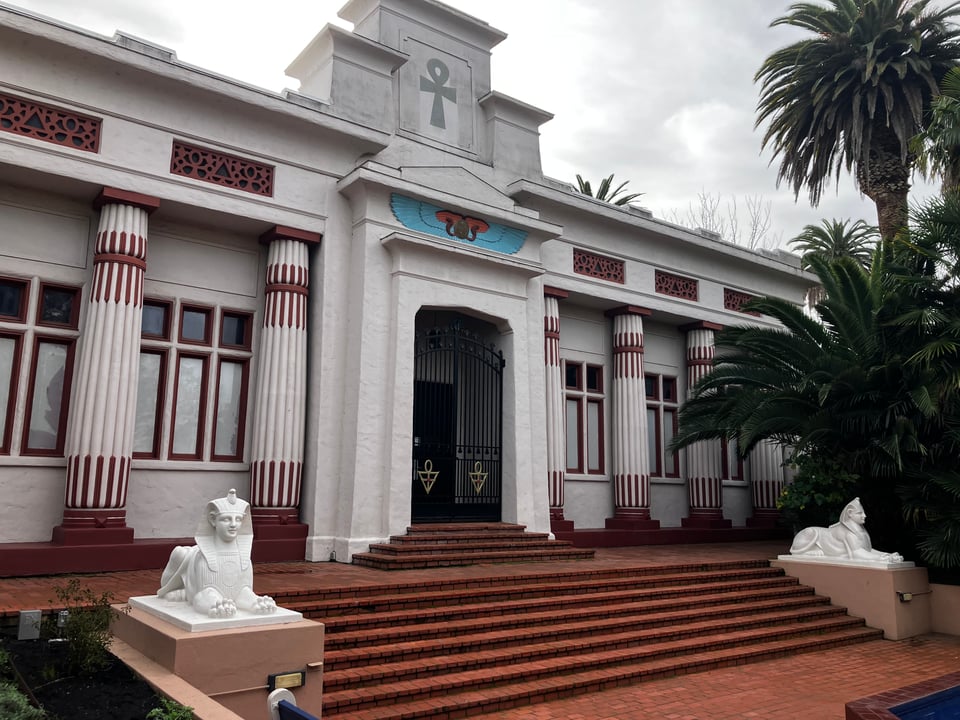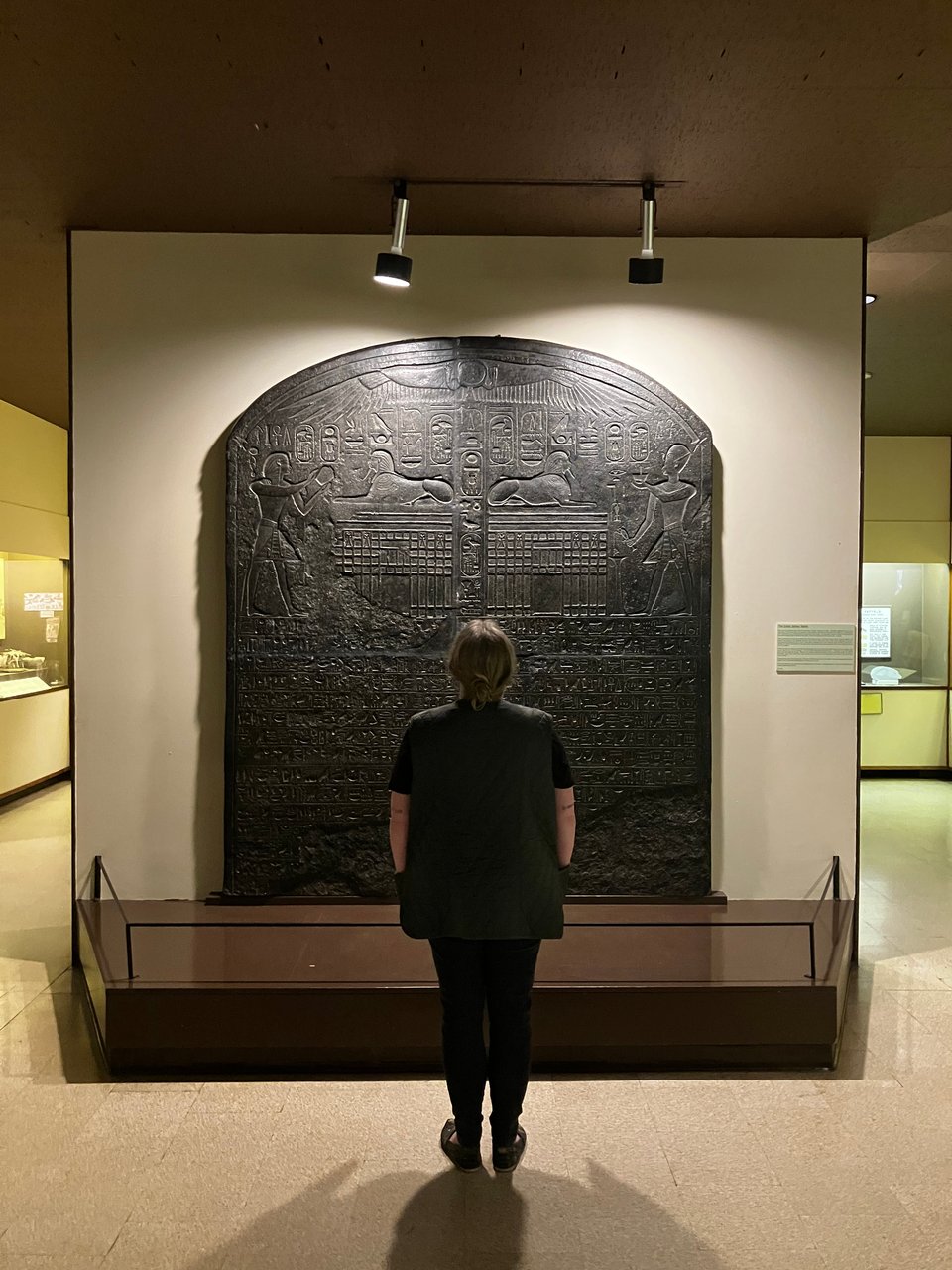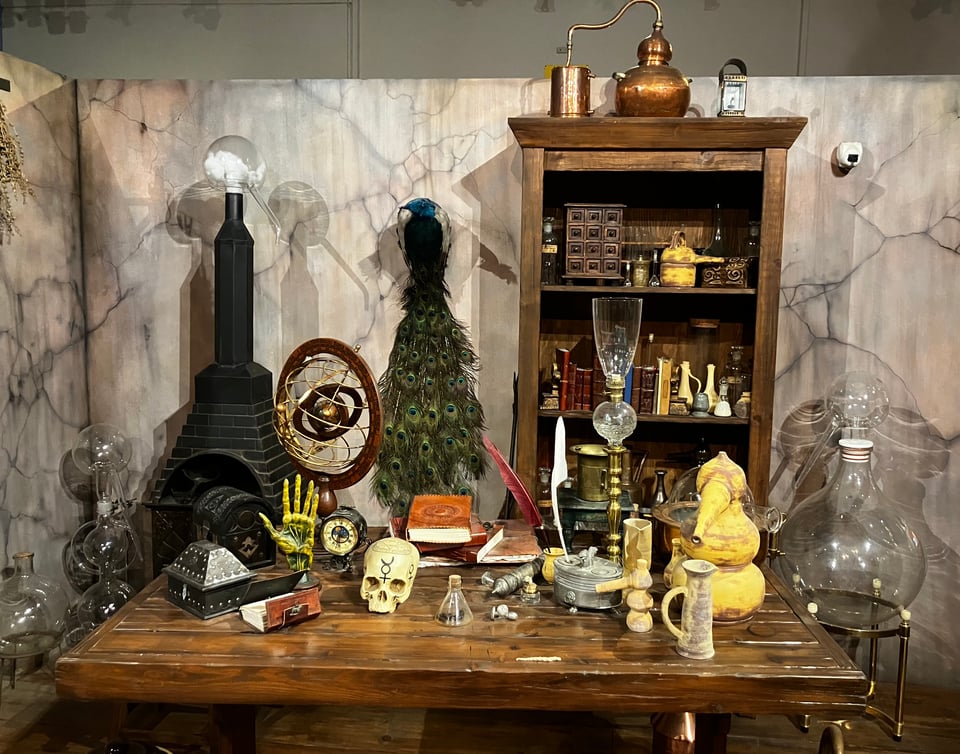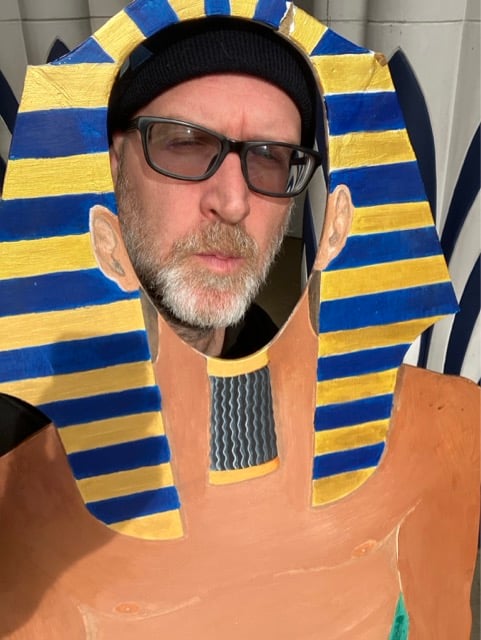Greetings, friends. Besha and I left Joshua Tree yesterday, scooted across L.A., stopped in Camarillo for a burrito with Erin, and then hauled up 101 clear to Santa Cruz for the night. This morning we caught Jasmine & Kellan en passant for coffee & a stroll along the waterfront in Capitola, then set off for Oakland.
As we were coming into San Jose, Besha noted that we were due to arrive early for our respective social plans, and suggested mounting a side quest to visit the Rosicrucian Egyptian Museum.
The what now?
“There’s a museum of Egyptian antiquities right here in San Jose. I’ve never been, but I’ve always wanted to see it. It’s just a couple miles up the highway.”
If there is anything Besha and I absolutely share, it is a love of antiquities of any description.
But the Rosicrucians? The same Hermetic esotericists who, as far as I’m aware, squeeze in somewhere between Ordo Templi Orientis, the Satanists, A∴A∴, the Theosophists, and the Church of the Subgenius?
As Besha likes to say, “Just so.”
The Rosicrucian Egyptian Museum sits on the grounds of the world headquarters of the Ancient Mystical Order Rosae Crucis, better known as the “Rosicrucian Order, AMORC”. Alongside the museum, the Rosicrucian Park also includes a planetarium and a peace garden. The Park is situated, quite appropriately, in the Rose Garden neighborhood of San Jose, California, right across the street from the Herbert Hoover Middle School.
I was vaguely unsurprised that the Rosicrucians had their own Egyptian antiquities museum; somehow, that sounded about right. Indeed, the writings of the possibly-mythical Christian Rosenkreuz are rooted in the pre-Christian Gnostic traditions associated with the absolutely-mythical sage Hermes Trismegistus. Old H.T. himself was apparently understood to be a kind of Late Hellenistic mashup of the Greek deity Hermes and the Egyptian god Thoth.
The Rosicrucian tradition itself has a lot in common with the Church of the Subgenius, in that its early proponents seem to veer between claiming their teachings to be both ancient wisdom and also an elaborate hoax, without clearly committing either way.
So, yeah. The Rosicrucians have an ancient Egyptian museum in San Jose because of course they do.
Wikipedia has this to say about the founder of AMORC, one H. Spencer Lewis:
Harvey Spencer Lewis in 1904 founded the Rosicrucian Research Society. Lewis was an advertising agent from New York and the founder of another group called the New York Institution for Psychical Research. He founded the Ancient Mystical Order of the Rosy Cross (AMORC) in 1915 after a trip to France, claiming that he had been initiated into Rosicrucianism there in what he called an "old tower" in Toulouse.
Modern Hermeticists, for whatever reason, love this shit. They are constantly getting initiated into mysteries in old towers, joining esoteric brotherhoods or else launching new ones, and then subsequently quitting them in a schismatic huff.
Wikipedia continues in the same vein:
Lewis affiliated with many occult groups, especially Aleister Crowley's Ordo Templi Orientis. Following a 1916 split in the O.T.O., the schismatic German branch recognized AMORC, giving him a document to prove this. He was proud of receiving this document, despite differences in belief between the two organizations (AMORC did not practice sex magic).
Too bad for the Rosicrucians! Poor frumpy Lewis appears to have sublimated his basest urges instead into acquiring artifacts with mystical significance, including some from ancient Egypt.
In much the same way as owning more than two Beanie Babies or, say, a couple of plates from the same rare Corelle collection perforce turns into a slippery slope of collectible acquisition, so did H. Spencer Lewis amass the greatest hoard of ancient Egyptian artifacts ever to grace the West Coast of the United States. By 1928, he had enough to open a museum.
The grounds of the Rosicrucian Park are, well… I will let the rear promenade of the museum building speak for itself.

The museum itself is actually pretty great. It’s three floors high, with five exhibit halls. Three and a half of these halls are dedicated to Lewis’s collection of artifacts, plus everything acquired by the museum since then.
The ground floor features some sarcophagi and a mummy, who is, perplexingly, believed to be not the person whose coffin he was found in, but rather someone else who was mummified about a thousand years before the sarcophagus was built?
That confusion notwithstanding, the museum’s holdings extend across the history of Egyptian antiquity, as well as the full breadth of human activity. The curation of artifacts was quite good, aside from an insider’s tendency to label items as, say, “18th Dynasty”, with the seeming implication that you should already know the precise historical timeframe.
Rosicrucianism might or might not be an elaborate hoax, but their Egyptian museum is the real deal.
One thing that becomes clear from such a broad survey of civilization in the Nile Valley is that it goes so far back in time — about five thousand years — that even Ancient Egypt had its own Ancient Egypt. Besha reminded me that, when Cleopatra gazed on the Pyramids of Giza, they were quite literally as old to her as she is to us today.

One sign in the exhibit halls caught my eye. It relates an attested narrative from 4,000 years, describing a debate between a man and his soul (or ba) over whether he should end his own life:
"Are you not a man? Are you not alive? What do you gain by complaining about life like a wealthy man?" asks the ba.
The man tells his soul, "My name is hated! Behold, more than the smell of vultures on a summer's day when the sky is hot... To whom can I speak today? The wrongdoer is an intimate friend and the brother with whom one used to act is become an enemy... Truly, he who is in the West [i.e. deceased] will be a living god....”
His adamant ba responds: "Toss your complaints upon the wood-pile(?), my comrade and brother; make offerings on the brazier and hold to life... thrust the West aside, but desire that you may attain the West when your body goes to earth... then will we make an abode together."
It sure seems to me that the human condition has not changed much over the millennia.
The real treat of the museum, in my opinion, is stashed away on the second floor: The alchemy exhibit.

Filled with quite earnest displays relating the methods and materials of the alchemical tradition, the centerpiece of the exhibit was nothing less than a seven-foot-tall animatronic statue of Thoth himself. An attendant invited me to step up to the microphone and ask a question, so I did.
As Thoth so eloquently put it, "In the grand theater of existence, every victory is but a fleeting moment."
The Rosicrucian Egyptian Museum! Is it history? Or is it mystery? Why not both!!
I am grateful to my wife for suggesting such a delightful experience.

Toss your complaints on the wood-pile, my comrades; make offerings on the brazier and hold to life! Ceterum censeo imperdiet vigilum cessandam est. More soon.
You just read issue #83 of Greetings, friends.. You can also browse the full archives of this newsletter.
